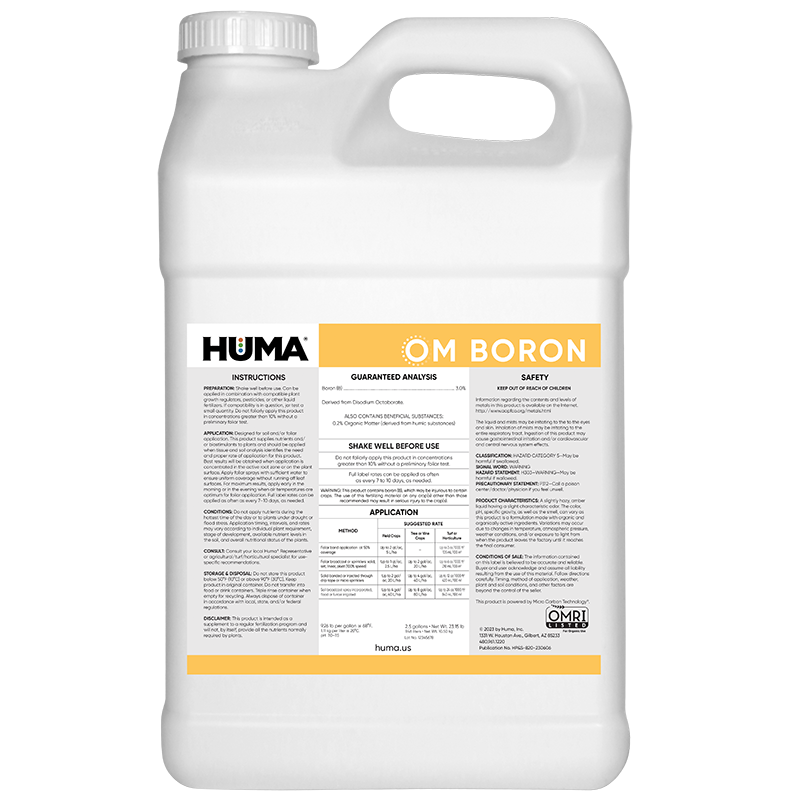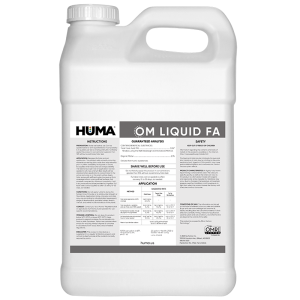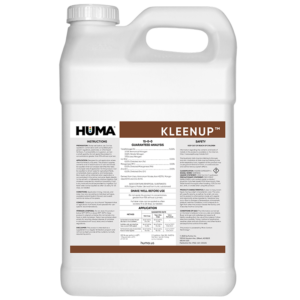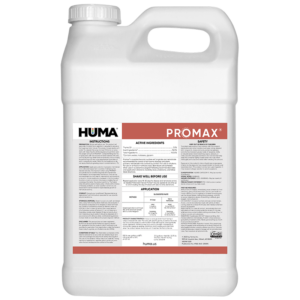OM BORON
Benefits of Use:
- Effectively treats boron deficiency symptoms, supplying boron nutrition necessary for metabolic activity, proper growth, and maturation
- Functions with calcium to form an “intercellular cement” to maintain plant structural integrity
- Provides quick crop response and can be applied just prior to actual crop need
- Can be applied foliarly (according to label directions) without risk of phytotoxicity
- Can be effectively tank-mixed with other organic crop inputs
- Resists tie-up in the soil and remains available through the plant root system
FAQs
Related Products
Related Case Studies
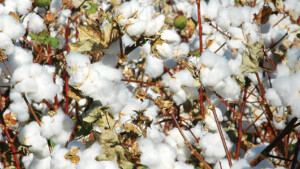
Huma® Zap® Increases Cotton Lint Yield by 125.8 lb/A, With 67% ROI
Background Application of Zap® to soils in combination with other Huma® fertilizers at various locations previously resulted in crops with improved plant growth and higher yields. Applying Zap® with grower standard products or as a single product application to soil and plants could also impact results. Objective The focus of this study was to observe

Huma® Breakout® Increases Cotton Production 15% for Johnson Farms
Objective A field trial was conducted to compare using the treatment product Furst™ alone versus using Huma® Breakout® + Furst™ on a Johnson Farms Inc. cotton crop in Glendale, Arizona. Materials & Methods A field of cotton was split into two sections. Section 1 (35.01 acres) was treated with 32 ounces (1 quart) of Furst™

Huma® Fertilizer Products Increase Cucumber Yields at ROI of 113%
Objective The purpose of this research project was to evaluate how Huma® liquid fertilizer products with Micro Carbon Technology® affect cucumber yield when compared with a control program of grower’s standard fertilizer. Materials & Methods This study was conducted at the Southeast Ag Research facilities in Chula, Ga. The experiment was conducted with four replicates.
Related Blog Posts

This Week in Ag #7
For most farmers, April means the start of planting season. It’s a lot like opening day for a baseball team: heavy planning, great excitement and anticipation, lots of optimism and more than a few watch outs. So when exactly do farmers start planting? While they all have a plan, Mother Nature usually has the final say. There is

This Week in Ag #48
The popular TV series Yellowstone, along with the western lifestyle craze, has certainly romanticized ranching. It seems like everyone wants to be a rancher, until there’s real-world ranching stuff to do. This week’s bone-chilling Midwestern weather brings back memories. Notice I didn’t say fond memories. When you have livestock, they require care every day. Utility tractors

New Fertilgold® Organics Promo Video
There’s tremendous power in nature. What if you could harness that power and put nature’s science to work growing your premium organic crop? To see how, watch this 30-second introductory video for Fertilgold® Organics.

